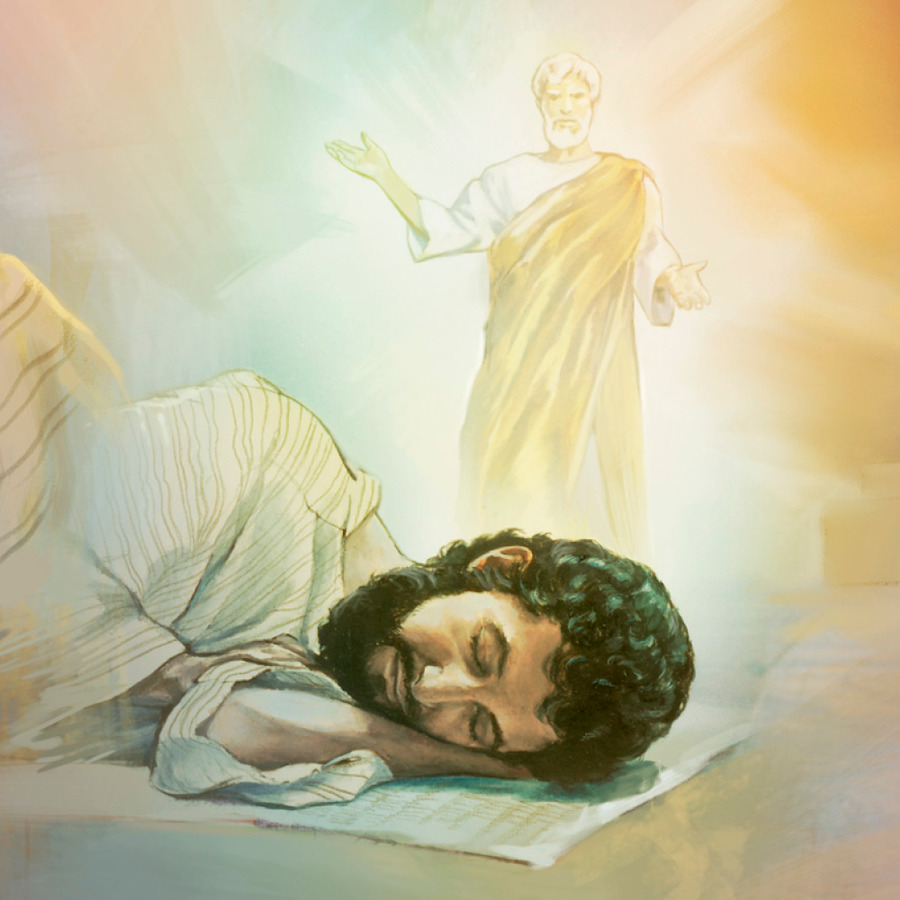We have finally entered the liturgical season of Advent, preparing for the celebration of Christ's birth and for His return. It is also the season of reading the Old Testament as we will for every celebration of Mass during Advent. So, we too shall look to the Old Testament.
Last week, we began looking at the story of the Old Testament Joseph, and in particular, the story of Pharaoh making Joseph the #2 guy in Egypt, which gave us a deeper understanding of Joe's role in the "hierarchy" of saints. Immediately after this scene, we get some really interesting information that furthers our understanding of Joe: Genesis says, "Pharaoh also bestowed the name of Zaphenath-paneah on Joseph, and he gave him in marriage Asenath, the daughter of Potiphera, priest of Heliopolis." (
Gen. 41:45).
Now, if you're like me, the first time you read this, you probably asked yourself "What did Pharaoh call him? Zaphe-WHAT? and what in the world is up with his wife?" but don't worry, because these names are really cool and more than coincidental!
The New American Bible (Revised Edition) gives a
footnote for this verse, which says:
- Zaphenath-paneah: “the god speaks and he lives.”
- Asenath: “belonging to Neith.”
- Potiphera: “he whom Ra gave”.
- Heliopolis: a city of the chief temple of the sun god.
We can understand these words to be very interesting foreshadowing of the Holy Family:
- When Joe found Mary pregnant, and not by him, he could have had her put to death for being unfaithful to their marriage. Naturally, if she would have been put to death, so would have her Son as well. So, when God speaks through the angel in Joe's dream and Joe is obedient to the messenger, the child does in fact live.
- Neith can be considered to relate in two ways:

- Neith was the Egyptian goddess who gave birth to Ra, the Egyptian sun-god and the greatest of the gods. Mary, although not a goddess, is indeed the true Mother of God.
- Neith was also the goddess of creation who brought about creation by moving the primordial waters. The Holy Spirit, who moved the primordial waters of creation (Gen. 1:1-2), also had a role to play in the incarnation of Jesus (Luke 1:35, Matt. 1:18,20)
- Asenath's father was a priest, but not just any priest. He was a priest of great sun-god, Ra. Recall the tradition of Mary being a daughter of Aaron that I shared already? Just like Asenath, Mary too was a member of the High-Priestly House.
Cool huh!?
 Today, we celebrate the Feast of St. John the Evangelist. The Gospel for today’s Mass is the scene from the Gospel according to John where John and Peter arrive at Jesus’ tomb and find the burial clothes folded. My pastor made a very interesting point that I had never heard before in his homily at this morning’s Mass; he attributed the connection of the “swaddling clothes” that Jesus was wrapped in as a newborn (Luke 2:7) with the burial clothes mentioned in today’s Gospel. That got me thinking.
Today, we celebrate the Feast of St. John the Evangelist. The Gospel for today’s Mass is the scene from the Gospel according to John where John and Peter arrive at Jesus’ tomb and find the burial clothes folded. My pastor made a very interesting point that I had never heard before in his homily at this morning’s Mass; he attributed the connection of the “swaddling clothes” that Jesus was wrapped in as a newborn (Luke 2:7) with the burial clothes mentioned in today’s Gospel. That got me thinking.




